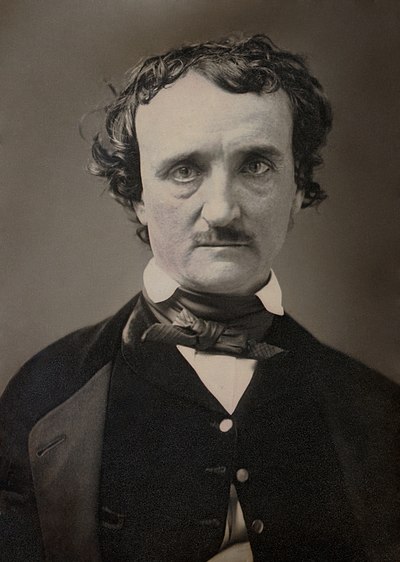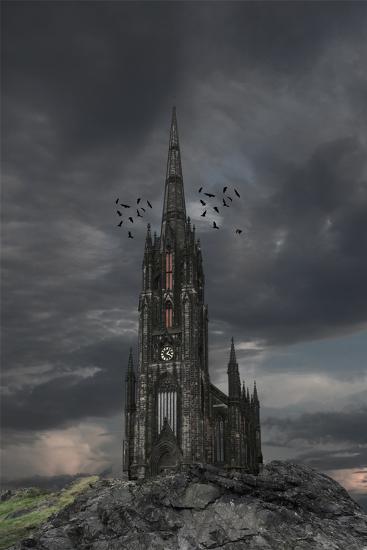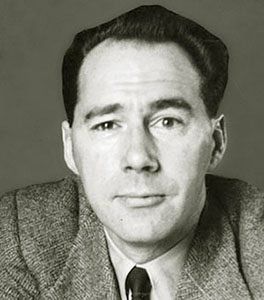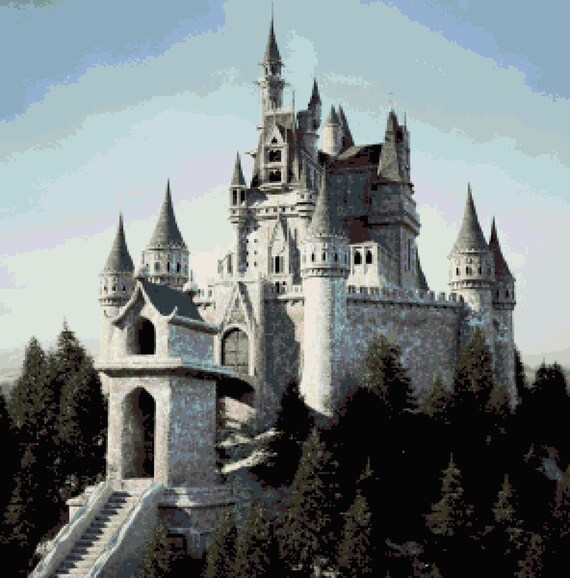
 No Time Like the Present. Or Past. Or Future.
No Time Like the Present. Or Past. Or Future.
One theme that is prevalent throughout science fiction is the ability to travel through time. Whether it’s backwards to the past or forwards to the future, whether it’s by use of some machine or a particular location, or some other method, the idea of time travelling appeals to us because it allows us to see how the past was (and maybe change it) or how the future will be, how things were or how they might turn out to be. Inevitably, there’s some price for going where we’re not supposed to go, but that hasn’t stopped writers writing about it.
The paradox is simple, and yet complex: if you travel into the past and change something does it then change the future (your present) and if so, is it for the good? Often the answer to the former is yes, and usually to the latter, no. The basic accepted advice is not to change, or try to change, anything in the past, because you don’t know how that might affect the future. Even something that surely should be seen as improving the future - killing Hitler before he rises to power, stopping 9/11 etc - usually, almost invariably ends up making things worse. This is because, in theory, the future cannot be changed, and if the past is, then the future realigns itself along the basis of the “new” past to create a “new” future where the event you changed, which was so pivotal, no longer matters, or even exists. So Hitler may be dead, but someone else may threaten the world and start the Second World War. Or a worse disaster might befall humanity.
Of course, changing your own future is inadvisable, as you may in fact cease to exist, as seen in the movie
Back to the Future, but then the inevitable paradox comes into play: if you went back to the past to, say, kill your father, and you did, then you could not have been born, and you (in the future, your present) would not have existed to go back to the past in the first place. Or, as Zoidberg puts it in
Futurama, “that useless time machine! If only it worked, then you could go back to the past and prevent yourself working on it!” Indeed.
Another theory is that (assuming you could go back into the past) any change made in the past creates an alternate timeline, which exists in tandem with your own, but on returning to the present you are shunted into this new timeline, so that both outcomes - the original, which would have taken place had you not gone into the past, and the new one, which is as a result of your meddling - unfold; you haven’t changed the future, just added a timeline in which you now live. This is demonstrated with surprising insight on the time-travel spoof TV show
Future Man, where each time he and his friends think they've changed the future, all they've done is created yet another timeline, and there are now hundreds of them!
We’ve already spoken of the Indian text
The Mahabharata, written some time between the 8th and 9th centuries BC, and the Japanese
Urashima Taro, both of which feature time travel, but proper stories involving the concept seem to have first appeared around the middle of the eighteenth century, the first written by (yay!) an Irishman.
Memoirs of the Twentieth Century, written by John Madden in 1733, is set in the years 1997 and 1998, and warns of the rise to power and influence of the Jesuits and the Catholics (Madden was an Anglican). Although the book is a series of letters from the future, no attempt is made to describe how this came to pass, and the book was largely forgotten, with the author himself destroying most of the copies soon after publication.
The only other work of the eighteenth century seems to be Jonathan Wessel’s
Anno 7603, where for some reason a fairy sends the characters to the year, you guessed it, 7603. Here, gender roles are reversed and only women are allowed fight in the military. The first proper work, then, is Washington Irving’s
Rip Van Winkle, the story of the man who goes to sleep and, Sleeping Beautylike, wakes up twenty years later (hmm. Always thought it was 100 years. Oh well) to find the world around him has changed. I guess technically speaking that’s not really time travel, just being really lazy and sleeping through so many alarms, but there you go.
The idea of time travel brings with it many pitfalls and decisions, particularly if you go forward. Even if you don’t use your jaunt into the past to change things in your present, ie the past, should you carry knowledge from there to your own time? After all, if you could go forward to next week and read the lottery numbers, wouldn’t you come back and do the lottery? Make yourself rich? That’s what happens of course in
Back to the Future II, sort of. Biff brings a sports almanac back from 1986 which allows his past self to “bet” on sporting events, already knowing their outcome, and so wager on the most outlandish and unlikely results, making himself into a millionaire.
It’s also a case of priorities. How do you use that knowledge you’ve acquired in the future? I always remember a story I read - think it was in
2000 AD - where this guy goes into the future, or finds himself in the future, can’t recall which - and reads the morning newspaper, turning to the back page to see what the sports results are, in order to be able to bet on the teams that win when he gets back to his own time. Unfortunately for him, he’s so engrossed in the articles that he walks out onto the road and is killed by a car. In the final frame, we see the FRONT headline of the paper he was reading, which runs the shocking story of the man who just walked out into traffic reading a paper and was killed. Priorities, see?
But who wouldn’t want to change their future? How can we resist such a pull? Few can, and for this reason some authors invented time police (with various names) who patrol the time lanes, checking on world events and going to “trouble spots” to undo the damage done by careless time travellers. In some - most - of the times these people come from it’s a crime to alter time, though you could argue it does at least keep these guys in a job. No? Have it your way, then.
The nineteenth century saw a glut of time-travel fiction, culminating of course in the most famous of them all, Wells’s 1858 classic
The Time Machine. Interestingly, in his novel the protagonist does not interfere with time - much - and is really just there as an observer. Even when he has to interfere, he realises he will be stuck in the far future forever. In at least the original movie of the novel, the time machine looks something like a cross between a wheelchair and one of those air boats that they use in the Florida swamps! As time (sorry) went on, of course, the design of time machines became more streamlined and… what? It didn’t? A police telephone call box, you say? Well I never!
Truth to tell, time machines have never looked what you might call sexy. Possibly because they don’t need to: unlike spaceships they don’t need to carry a crew or orbit a sun or do all the other things spaceships do, and possibly because if you land a time machine it’s probably best that it looks as unobtrusive as you can make it. The original TARDIS in
Doctor Who was supposed to have cloaking technology, which allowed it to blend in with its surroundings, but it got stuck as a police box and was never able to change back. Apparently. So now it’s rather conspicuous if it lands on an alien planet, under the sea or in on a space station. Oh, well.
As for time travel writing in the 19th century, well there’s another famous one which you may have heard of, and though it doesn’t utilise any kind of time machine, in fact uses more spiritual means, Charles Dickens’s
A Christmas Carol does take Ebenezer Scrooge to his past and to his future, though in his case changing his present, not his past, is what supposedly changes his dark future, which kind of turns the whole principle of non-interference on its head, but then Dickens, a wonderful writer though he was, was no science fiction author, and probably didn’t care too much about
grandfather paradoxes or the
Cassandra principle.
Mention however must be made of Edward Page Mitchell’s 1881 short story for boys,
The Clock that Went Backwards, in which a clock is used as a time machine, and therefore makes this story the first recorded instance of time being navigated by the use of a device, and indeed, a device used for telling the time. Of course, only seven years later Wells would write
The Chronic Argonauts (sounds like a story about a particularly inept crew of sailors!) which would also use a time machine, before unleashing his masterpiece on the world in a further seven. Before him Samuel Clemens would pen
A Connecticut Yankee in King Arthur’s Court, under the name, of course, of Mark Twain, though the method of transportation of the main character into the past is left unexplained, and what we might call (and I will) time travel interference literature more or less seems to have begun with L. Sprague de Camp’s 1939 story
Lest Darkness Fall, in which the protagonist, an archaeologist, is transported back to the time of the Roman Empire and tries to prevent its fall.
After this, other authors began to explore the idea of changing the future/present by altering the past, notably Ray Bradbury in
A Sound of Thunder (1952), Ward Moore’s
Bring the Jubilee (1953) Robert A. Heinlein’s
The Door Into Summer (1957) and Alfred Bester’s
The Man Who Murdered Mohammed (1958) while other writers concentrated on keeping the past the past, with Poul Anderson’s
Time Patrol series (1955-1995), Harry Harrison’s
A Rebel in Time (1980), Simon Hawke’s
Time Wars series (1984-1991) and some writers, it would appear, ignore the whole idea of changing time and just send their characters on trips to the past or future.
Of course, as science fiction became popular on the new medium of television it was inevitable that time-travel scenarios would enter into some of the programs geared towards exploring the concept, such as
The Twilight Zone and
The Outer Limits, but the first series to actually focus on it as its main or only premise was an American show which debuted in 1951 called
Captain Z-ro, which followed the exploits of the eponymous scientist and his intrepid assistant Jet, the latter of which was sent each week back through time to correct some anomaly that would prevent our timeline from unfolding as it should. It ran for five years, though conveniently ignored the mechanics of time travel or the paradoxes involved.
The children’s animation show
Rocky and Bulwinkle featured a recurring segment called
Peabody’s Improbable History which basically took the piss out of history for kids; this ran for a year. The longest-running not only science fiction show but, I believe I am correct in saying, longest ever television show, is also the most famous time travel show. On November 23 1963, one day after the assassination of US President John F. Kennedy, William Hartnell took the police box which would be forever after known as the TARDIS (Time And Relative Dimension In Space) for its maiden voyage, and the show has continued - with a hiatus of almost twenty years - since then, and is still going, even more popular now than it was back then. Allowing for the break from 1989, that still means the show has run concurrently for a total of, to date, forty years. I don’t believe any show of any type has survived that long. I could be wrong. But certainly no science fiction show, and I doubt any drama. Maybe soaps. Maybe? Yeah I checked:
Coronation Street beats it. Boo. Still a massive legacy though.
Doctor Who follows the exploits and adventures of The Doctor, who has, to date, been played by a total of thirteen different actors, through a story device used whereby the Doctor can regenerate after a certain time, making him semi-immortal. He’s not human; he’s an alien, a Timelord from the planet of Gallifrey, and on the run to boot: a rebel, a maverick who refused to accept the future (hah!) mapped out for him, stole a TARDIS and off he went.
Doctor Who tends to use, mostly, the idea that the past should not be messed with, though quite often arriving in the past (or the future) it’s clear that something is not right, not as it should be, and then he has to intervene to return things to the way they should have been. As well as being able to travel in time (the name of his time machine tells the tale) the Doctor can also travel in space, and this provides respite from the constant worry of changing the future, as often his adventures take place on distant planets in far-off galaxies rather than a different time.
Initially,
Doctor Who was seen more or less as any time travel show before it, and a few after it, were: a glorified history lesson, but soon enough it became more of an adventure show, with the time travel aspect almost superfluous, and when reimagined in the twenty-first century became something of an amalgam of soap opera, sci-fi show and moral soapbox, tackling real-world issues in a way most sci-fi shows were now expected to. No longer a kids’ show, the new
Doctor Who targeted an adult audience, with deeper, darker storylines and even the deaths of characters, including some of the Doctor’s famous (and almost always female) companions. A tradition for many years since its rebirth was the annual Christmas
Doctor Who, an episode written exclusively for the festive season, and shown on Christmas Day.
Many shows from the sixties would focus merely on the educational value of time travel.
The Time Tunnel, as I recall, never had its characters interfere, though they participated in past events. I believe this show only ever had its protagonists go backwards in time, never forwards. When
Voyagers! hit in 1982 it was, I think, the first time travel series in which the past was deliberately altered by its characters - always to “restore the timeline” of course, and this idea continued in 1989 when another famous and popular series,
Quantum Leap made its appearance. In this one, Dr. Sam Beckett was able to “leap” into the bodies/consciousnesses of people living in whatever time he arrived in, then solve the “glitch in time”, precipitating his expulsion from that body and time into the next, in the hope that somehow he would eventually “leap” home. He never did.
Up until the 1950s, the movies that dealt with time travel all tended to focus on trips to the past. This isn’t that surprising: it’s easier (and probably cheaper) to recreate what was than to speculate on what might be, and so you have about three versions of Twain’s story, comedy-musical romps through the past and a few temporal paradoxes, such as in 1933’s
Turn Back the Clock, 1944’s
Fiddlers Three and the film-noir
Repeat Performance from 1947. 1956 saw the release of the somewhat troubled B-movie
World Without End, which ran into legal problems with the estate of H.G. Wells claiming it ripped off his novel
The Time Machine. Oddly enough, starring in a bit role in the movie was one Rod Taylor, who would only four years later star in a dramatisation of the Wells classic. It does, however, represent the first time that a movie about time travel chooses to show the future rather than the past.
Four years later, a similar movie, with a plot even closer to that of
The Time Machine it seems to me - two races of people in the future, one living underground (though in this case it’s the humans who live beneath the earth while the mutants rule the surface but still…) - was released, but for whatever reason it seems
Beyond the Time Barrier didn’t receive the same attention that our poor friend
World Without End did, perhaps because the film adaptation of that story starring Rod Taylor had already been released two months earlier, and was of course much more successful.
The Time Machine movie follows the basic plot of the novel, but in typical Hollywood style adds in a romantic slant that was not in the book, and thereby softens the overall effect. The movie would however be praised for its pioneering use of camera effects and tricks to show the passage of time as the machine moves forwards in time (never backwards). This movie established firmly the idea of time travel, and it’s notable that three years before the film hit the big screen, adventures were already being had in time on the small screen by
Captain Z-Ro and, indeed, Peabody and Sherman, and would soon explode into British living rooms as
Doctor Who made its debut, changing the face of TV almost as much as
Star Trek would a few years later.
1964’s
The Time Travelers was in fact the inspiration behind the TV series
The Time Tunnel, which premiered two years later, while the success of
Doctor Who had already resulted in two movies,
Doctor Who and the Daleks in 1965 and
Daleks - Invasion Earth 2150 the following year, establishing the series as a box-office draw as well as a television sensation, though the series remained - and has mostly remained, even to very recently - a British and European phenomenon, largely unrecognised in the USA at all. 1968 - 1971 saw the emergence of the
Planet of the Apes series, which went on to spawn a TV series (reversing the order in which
Doctor Who had come into being) and Kurt Vonnegut’s novel
Slaughterhouse Five came to the screen in 1972.
























 Linear Mode
Linear Mode
